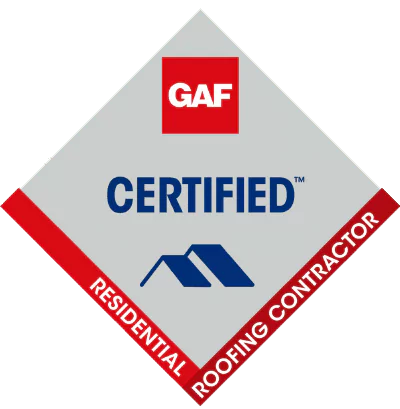YES! Due to our status as a Master Elite Roofer we are able to offer up to a 25 year leaks and labor warranty.
Leaks, missing or torn shingles, loose flashings, excessive shingle granules in gutters, and ceiling spots can signal roof problems. Age is another indicator; if your roof is 20 years old, it could be at the end of its lifespan.
Choosing the right roofing material hinges on factors like budget, climate, aesthetics, and durability needs. Asphalt shingles offer affordability and versatility, while metal roofing boasts durability and energy efficiency. Wood shakes provide a natural look but require high maintenance, whereas clay tiles offer durability and fire resistance but at a higher cost. Slate is exceptionally durable but expensive, while synthetic materials mimic natural options with lower maintenance. We can help you find the right roofing materials for your property.
Identifying hail damage on your roof typically involves a visual inspection for signs like dents or divots on metal surfaces, cracked or missing shingles on asphalt roofs, or fractures and chips on clay or concrete tiles. Look for granule loss on asphalt shingles, which may expose the underlying material. Check for soft spots or areas that feel spongy when walked upon, indicating underlying damage. Additionally, inspect gutters and downspouts for accumulated granules or dents, as these can indicate hail impact. If unsure, consider having a professional roofing inspection to assess any potential damage accurately.
The time it takes to replace a roof depends on several factors, including the size of the roof, the complexity of the project, weather conditions, and the roofing materials being used. In general, a typical residential roof replacement takes one day. We can talk through your project when you give us a call.
Asphalt shingles, the most common type of roofing material, have an average lifespan of 20 to 30 years. However, this number can vary depending on the climate and location of your home, as well as the quality of the materials used.
As anything in a market it is driven based on supply and demand. The material costs have skyrocketed in the past year to make it more expensive than normal. Will the prices go down? They may drop a little but with inflation and more costly material prices it is unlikely to see a dramatic drop.
Typically the fall is the best time. This is due to more consistent weather, less rain. We can install roofs no matter what time of year.









